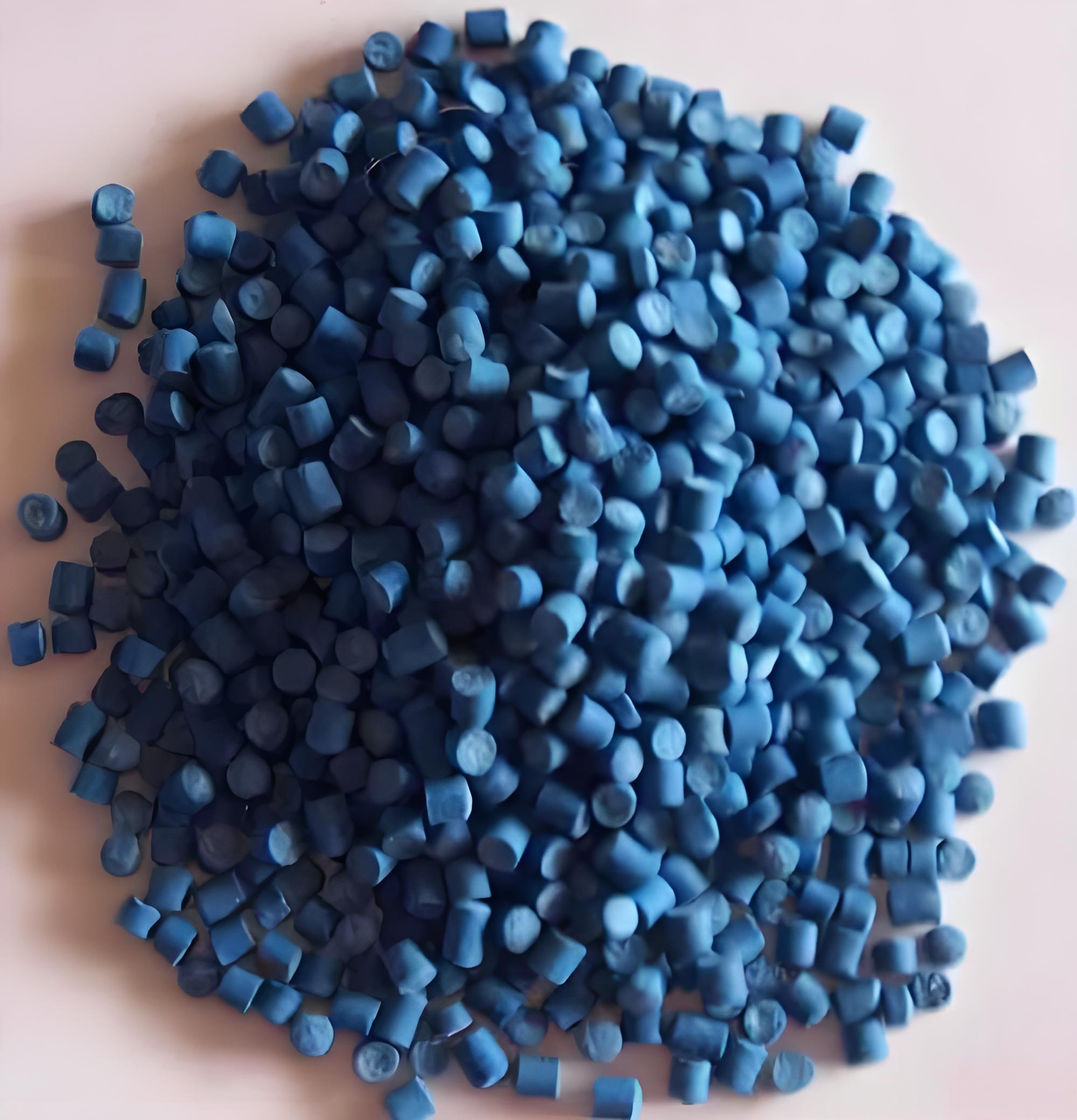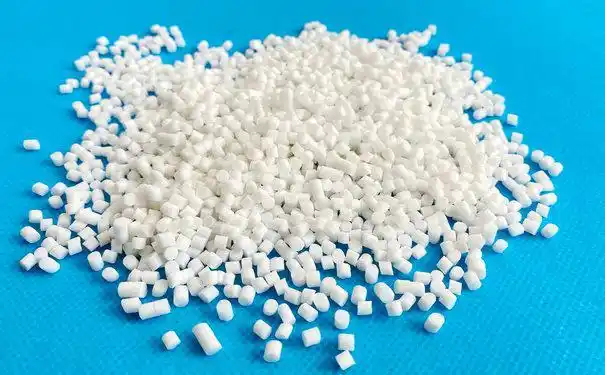After spending over a decade in the plastics and elastomer industry, I’ve seen my fair share of production hiccups, and one question that pops up regularly is how long to dry thermoplastic elastomer (TPE) materials before processing. It’s a critical step that can make or break your final product. Get it wrong, and you’re looking at defects like bubbles, poor surface finish, or even material degradation. Drawing from years of hands-on experience, I’ll walk you through everything you need to know about drying TPE, including how long it takes, why it matters, and practical tips to get it right. My goal is to help you avoid costly mistakes and achieve consistent results, whether you’re molding grips, seals, or medical devices.

Why Drying TPE Matters
TPEs are a versatile class of materials that combine the flexibility of rubber with the processability of plastics. They’re used in everything from soft-touch handles to automotive parts. But here’s the catch: TPEs, especially hygroscopic ones like TPU (thermoplastic polyurethane) or TPEE (thermoplastic polyester elastomer), can absorb moisture from the air. This moisture can wreak havoc during processing, causing issues like:
Splay marks: Silvery streaks on the product surface due to vaporized moisture.
Bubbles or voids: Trapped water vapor forming defects inside the part.
Reduced mechanical properties: Moisture can degrade the polymer, leading to brittle or weak parts.
Early in my career, I worked on a project where we skipped proper drying for a batch of TPU. The result? A whole run of medical tubing with tiny bubbles that failed quality control. Since then, I’ve been meticulous about drying protocols, and I’m here to share what I’ve learned to save you from similar headaches.
Factors That Influence TPE Drying Time
Not all TPEs are created equal, and drying requirements vary based on several factors. Here’s what I consider when determining drying time:
TPE Type: Styrenic TPEs (like SEBS or SBS) are less hygroscopic, while TPU and TPEE absorb more moisture and need longer drying.
Moisture Content: Freshly delivered TPE pellets might have 0.1–0.5% moisture, but exposure to humid environments can push this higher.
Pellet Size and Shape: Smaller pellets dry faster due to higher surface area.
Drying Equipment: Dehumidifying dryers are more efficient than hot-air dryers.
Processing Method: Injection molding often requires drier material than extrusion due to higher temperatures and pressures.
Environmental Conditions: High humidity in your facility can slow drying or reintroduce moisture.
I once consulted for a factory in a humid coastal area where TPE pellets were picking up moisture faster than the dryer could handle. We had to adjust drying times and store pellets in sealed containers to keep them dry.
General Guidelines for TPE Drying Times
So, how long should you dry TPE? The answer depends on the specific TPE type and the drying equipment. Based on my experience and industry standards, here’s a breakdown of typical drying times for common TPE types:
1. Styrenic TPEs (SEBS, SBS)
Styrenic TPEs, like SEBS (styrene-ethylene-butylene-styrene) or SBS (styrene-butadiene-styrene), are less hygroscopic, meaning they absorb less moisture. However, drying is still recommended, especially if the material has been stored in humid conditions.

Drying Time: 2–4 hours
Temperature: 60–80°C
Moisture Target: Below 0.05%
Dryer Type: Hot-air or dehumidifying dryer
In one project, I worked with SEBS-based TPE for soft grips. We dried the material for 3 hours at 70°C using a dehumidifying dryer, which gave us flawless parts with no splay or bubbles.
2. Thermoplastic Polyurethane (TPU)
TPU is highly hygroscopic and requires thorough drying to avoid defects. It’s commonly used in applications like cables, footwear, and medical devices.
Drying Time: 3–6 hours
Temperature: 80–100°C (polyester-based TPU) or 90–110°C (polyether-based TPU)
Moisture Target: Below 0.02%
Dryer Type: Dehumidifying dryer (hot-air dryers are less effective)
I once ran a TPU extrusion line where insufficient drying (only 2 hours) led to bubbles in the tubing. After bumping it to 4 hours at 90°C with a dehumidifying dryer, the issue disappeared.
3. Thermoplastic Polyester Elastomer (TPEE)
TPEE, used in high-performance applications like automotive parts, is also hygroscopic and needs careful drying.
Drying Time: 3–5 hours
Temperature: 100–120°C
Moisture Target: Below 0.03%
Dryer Type: Dehumidifying dryer
In a project for TPEE automotive seals, we dried the material for 4 hours at 110°C to ensure no moisture-related defects during injection molding.
4. Thermoplastic Vulcanizates (TPV)
TPVs, a blend of rubber and plastic, are less hygroscopic than TPU or TPEE but still benefit from drying, especially for precision parts.
Drying Time: 2–4 hours
Temperature: 80–100°C
Moisture Target: Below 0.05%
Dryer Type: Hot-air or dehumidifying dryer
For a TPV weatherstripping project, we dried the material for 3 hours at 90°C, which ensured consistent extrusion and a smooth surface finish.
Drying Time Comparison Table
Here’s a quick reference for drying times and conditions for common TPE types:
|
TPE Type |
Drying Time (Hours) |
Temperature (°C) |
Moisture Target (%) |
|---|---|---|---|
|
SEBS/SBS |
2–4 | 60–80 | <0.05 |
|
TPU |
3–6 | 80–110 | <0.02 |
|
TPEE |
3–5 | 100–120 | <0.03 |
|
TPV |
2–4 | 80–100 | <0.05 |
Note: Always check the material’s technical data sheet (TDS) for manufacturer-specific recommendations, as formulations vary.
Drying Equipment: Choosing the Right Tool
The type of dryer you use significantly impacts drying time and effectiveness. Here’s what I’ve learned about the main options:
Hot-Air Dryers: These circulate heated air to remove surface moisture. They’re cheaper but less effective for hygroscopic TPEs like TPU or TPEE. I use them for SEBS or TPV in low-humidity environments.
Dehumidifying Dryers: These use a desiccant to remove moisture from the air, achieving lower moisture levels. They’re essential for TPU and TPEE. In my experience, a dehumidifying dryer with a dew point of -40°C or lower is ideal.
Vacuum Dryers: These are less common but can reduce drying time by pulling moisture out under vacuum. I’ve used them for small batches of TPU when time was tight.
One mistake I made early on was using a hot-air dryer for TPU in a humid factory. The material never got dry enough, leading to splay marks. Switching to a dehumidifying dryer solved the problem instantly.

Practical Tips for Drying TPE
Over the years, I’ve picked up a few tricks to ensure TPE is properly dried without wasting time or energy:
Check the TDS First: The manufacturer’s technical data sheet is your bible. It lists specific drying times and temperatures for the TPE grade you’re using.
Use a Moisture Analyzer: Invest in a moisture analyzer to measure the pellet’s moisture content before and after drying. Aim for 0.02–0.05% moisture, depending on the TPE type.
Dry in Small Batches: Overloading the dryer can lead to uneven drying. I typically fill the hopper to 75% capacity for optimal airflow.
Seal Storage Containers: After drying, store pellets in airtight containers to prevent reabsorption of moisture. I learned this the hard way when a batch of TPU reabsorbed moisture overnight in a humid warehouse.
Monitor Dryer Performance: Check the dryer’s dew point and temperature regularly. A poorly maintained dryer can sabotage your efforts.
Pre-Dry Before Long Storage: If you’re storing TPE for weeks or months, dry it first to prevent moisture buildup.
In one factory I managed, we cut drying time by 20% by upgrading to a high-efficiency dehumidifying dryer and optimizing our workflow. Small tweaks like these add up.
Common Mistakes and How to Avoid Them
I’ve seen plenty of drying mishaps over the years. Here are the most common ones and how to sidestep them:
Underdrying: Drying for too short a time (e.g., 1 hour for TPU) leaves residual moisture, causing defects. Always stick to the recommended time or longer if humidity is high.
Overheating: Drying above the recommended temperature (e.g., 130°C for SEBS) can degrade the material or cause oil bleeding. I once saw a batch of TPE turn brittle because of this.
Ignoring Humidity: In humid climates, TPE can absorb moisture during storage or even in the dryer if it’s not sealed properly. Use dehumidifying dryers and store pellets in sealed bags.
Skipping Moisture Checks: Assuming the material is dry without testing can lead to surprises. A moisture analyzer is worth its weight in gold.
One memorable incident involved a client who dried TPU for only 2 hours because they were in a rush. The resulting parts had bubbles and failed quality checks, costing thousands in rework. A simple moisture test would’ve caught the issue.
Real-World Examples from My Experience
To bring this to life, here are a few cases where drying time made a big difference:
Case 1: TPU Medical Tubing
A client producing TPU medical tubing was seeing bubbles in their extruded parts. They were drying for 2 hours at 80°C with a hot-air dryer. After switching to a dehumidifying dryer and extending the time to 4 hours at 90°C, the bubbles disappeared, and the tubing passed strict medical standards.
Case 2: SEBS Soft Grips
For a batch of SEBS-based soft grips (30A hardness), we initially dried for 2 hours at 70°C. In humid summer months, we noticed slight splay marks. Increasing the drying time to 3 hours and using a dehumidifying dryer ensured consistent quality year-round.
Case 3: TPEE Automotive Seals
A TPEE seal project required high precision. The TDS recommended 4 hours at 110°C in a dehumidifying dryer. We followed this to the letter and achieved defect-free parts, even under high-pressure injection molding.
These cases taught me that sticking to the manufacturer’s guidelines and adjusting for local conditions is key to success.

Industry Trends and Advances
The TPE industry is always evolving, and drying technology is no exception. Some trends I’ve noticed:
Smart Dryers: Newer dehumidifying dryers come with sensors that monitor moisture levels and adjust drying time automatically. I tested one last year that cut drying time by 15% without compromising quality.
Low-Moisture Formulations: Some TPE manufacturers are developing less hygroscopic grades, reducing drying needs. These are pricier but worth it for high-volume production.
Energy-Efficient Dryers: Modern dryers use less energy, which is a big deal for cost-conscious factories. I’ve seen energy savings of up to 20% with new models.
Keeping up with these trends has helped me optimize processes and stay competitive in the industry.
Final Thoughts
Drying TPE properly is a non-negotiable step for producing high-quality parts. Depending on the type—SEBS, TPU, TPEE, or TPV—you’ll typically need 2–6 hours at 60–120°C in a dehumidifying dryer to hit the target moisture level (below 0.02–0.05%). My years in the field have shown me that attention to detail—checking the TDS, using the right dryer, and testing moisture content—pays off in defect-free products and happy clients.
If you’re new to TPE processing or troubleshooting a specific issue, start with the manufacturer’s recommendations and adjust based on your environment and equipment. Invest in a good dryer, train your team, and don’t skip the moisture checks. With these steps, you’ll be well on your way to mastering TPE drying and producing top-notch products.
Related Questions and Answers
Q: Can I skip drying TPE if it’s fresh from the supplier?
A: Not always. Even sealed bags can contain trace moisture (0.1–0.5%). For hygroscopic TPEs like TPU or TPEE, always dry for at least 2–3 hours to be safe. Check the TDS for specifics.
Q: How do I know if my TPE is dry enough?
A: Use a moisture analyzer to confirm the moisture content is below 0.02–0.05%, depending on the TPE type. If you don’t have one, look for defects like splay or bubbles in test parts.
Q: What happens if I overdry TPE?
A: Overdrying (too long or too hot) can degrade the material, causing brittleness or oil bleeding. Stick to the recommended temperature and time in the TDS.
Q: Are there TPEs that don’t need drying?
A: Some non-hygroscopic SEBS or TPV grades can be processed without drying in low-humidity environments, but it’s rare. Always check the TDS and test a small batch first.





